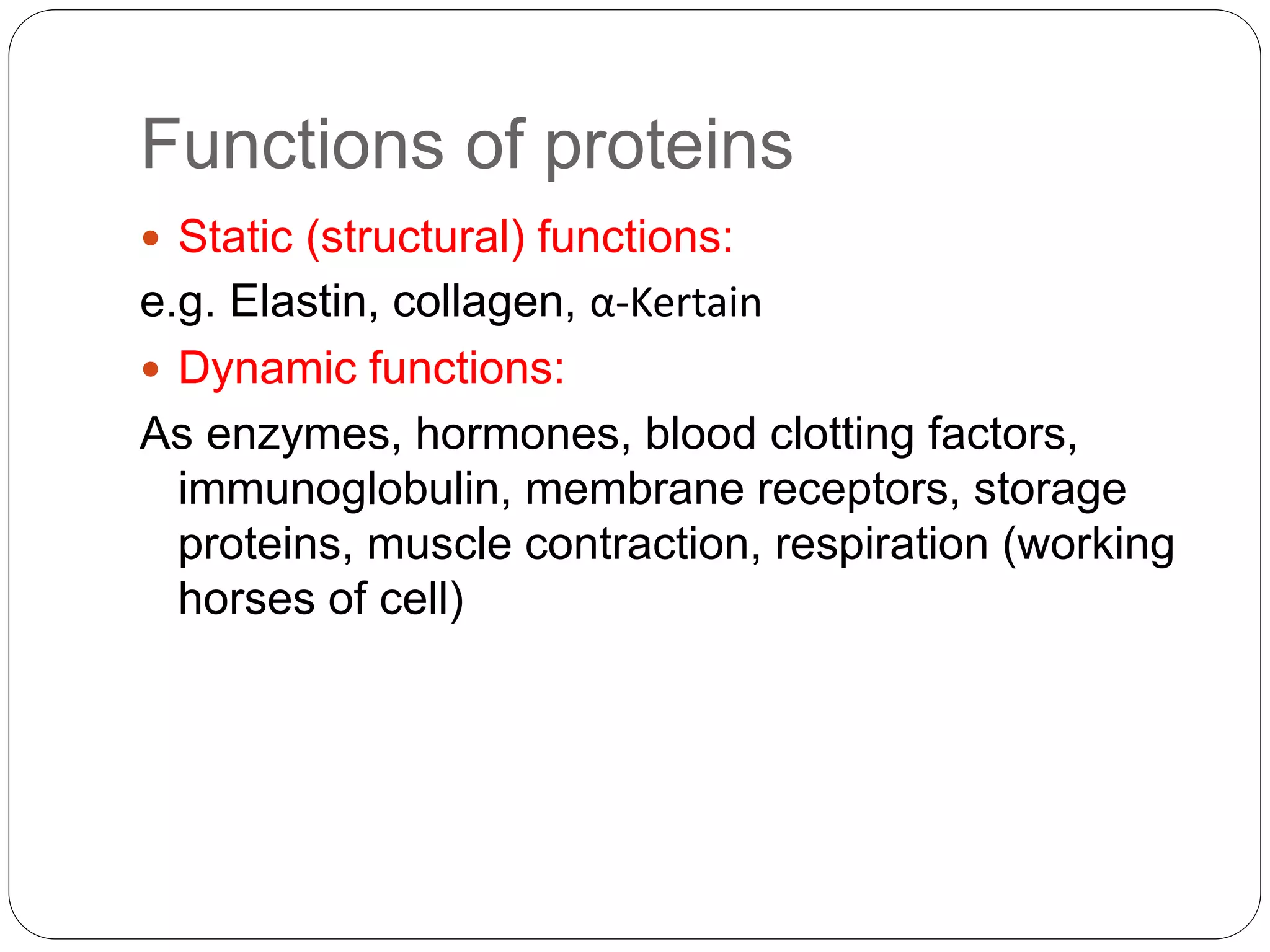The document provides information on proteins, including:
- Proteins are the most abundant organic molecules and constitute about 50% of cellular dry weight. They perform structural and dynamic functions in the cell.
- Proteins are polymers of amino acids. There are 20 standard amino acids that make up proteins. Amino acids contain amino and carboxyl groups and have varying side chains that determine their properties.
- The primary structure of a protein is its unique sequence of amino acids as determined by genes. Higher levels of structure include secondary, tertiary and quaternary organization that influence a protein's shape and function.


























